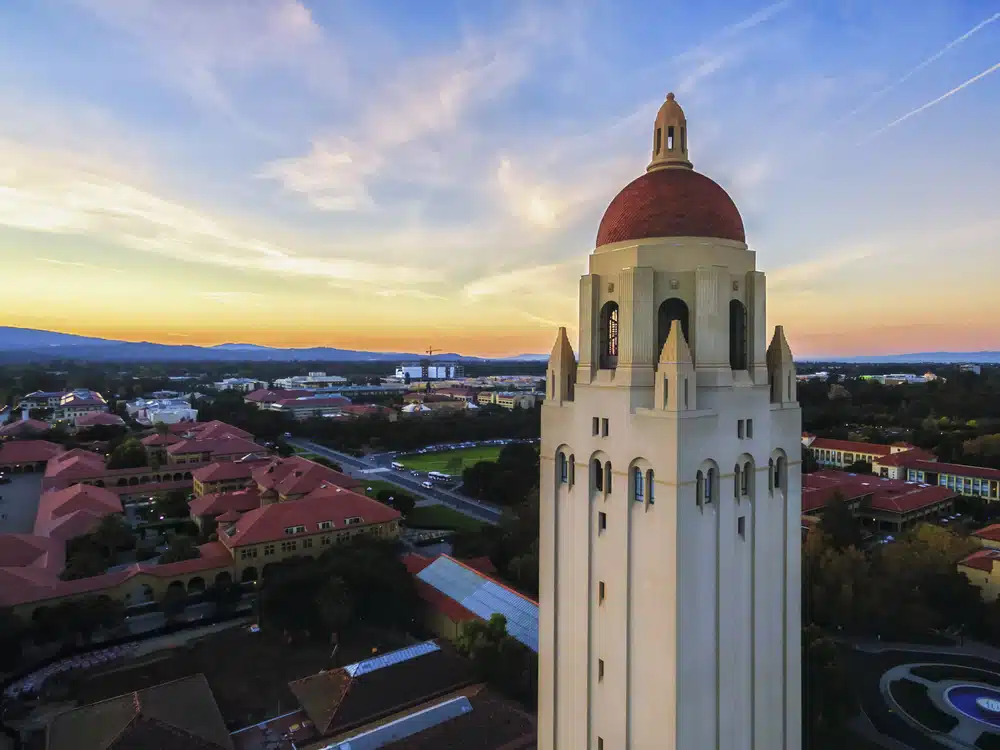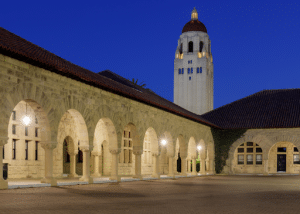Does Stanford Offer Early Action?
Many aspiring college students grapple with the question, “Does Stanford offer Early Action?” This question arises due to the often confusing and complex college application process. This article will provide clarification on Stanford‘s admission policies, specifically with regard to Early Action.
Understanding Early Action
Before we delve into Stanford’s policies, it’s crucial to understand exactly what Early Action is. Early Action is an application process that allows students to apply to a college or university in advance of the normal application deadlines. This earlier submission grants students the advantage of hearing back from the university sooner than those who apply via Regular Decision.
This application plan is non-binding, meaning that students are under no obligation to enroll if they are accepted. They can still apply to other colleges, unlike Early Decision applicants, who must commit to a college if accepted.
Early Action is a popular choice among students who want to get a head start on the college application process. By submitting their applications early, students can potentially receive their acceptance letters before the end of their senior year, providing them with a sense of relief and allowing them to plan for their future ahead of the traditional acceptance timeline.
Furthermore, Early Action allows students to have more time for financial planning and arranging logistics such as housing. With the knowledge of their acceptance earlier, students can explore various financial aid options and scholarships, ensuring that they can make informed decisions about their college education.
Benefits of Early Action
Early Action provides numerous benefits. Foremost, receiving an acceptance letter earlier reduces stress as students can plan for their future ahead of the traditional acceptance timeline. This allows for more ample time for financial planning and arranging logistics such as housing.
Additionally, the Early Action application process can potentially increase a student’s chances of admission. Since the applicant pool for Early Action is usually smaller compared to Regular Decision, students may have a higher probability of being admitted. However, it is important to note that the Early Action applicant pool is often more competitive, as it attracts motivated and high-achieving students who are eager to secure their spot at their desired college or university.
Moreover, applying through Early Action demonstrates a student’s strong interest in a particular institution. Admissions officers often view Early Action applicants favorably, as they perceive these students as proactive and committed to their education. By submitting an Early Action application, students can showcase their enthusiasm for the college or university and potentially strengthen their overall application.
Furthermore, Early Action allows students to receive their admission decisions earlier, giving them the opportunity to compare offers from different colleges and make an informed decision about where they want to pursue their higher education. This early knowledge can alleviate the pressure of waiting for acceptance letters and enable students to confidently plan their academic journey.
In summary, Early Action is a beneficial application process that provides students with the advantage of receiving early admission decisions, reducing stress, and allowing for more time to plan for their college education. It is a popular choice among motivated and proactive students who want to take control of their future and make informed decisions about their higher education.
Stanford University’s Admission Policies
Overview of Stanford’s Admission Process
Stanford University, one of the most prestigious institutions in the United States, has a meticulous and selective admission process. The university thoroughly reviews every application, evaluating each candidate’s academic prowess, extracurricular achievements, and personal attributes.
Stanford’s commitment to academic excellence is reflected in its rigorous admission standards. The university seeks students who have demonstrated exceptional intellectual curiosity, a passion for learning, and a drive to make a positive impact on the world. Admissions officers carefully assess each applicant’s academic record, taking into account the rigor of their coursework, the grades they have earned, and any honors or awards they have received.
Extracurricular activities play a significant role in Stanford’s admission process. The university values students who have shown leadership, initiative, and a commitment to their communities. Whether it’s through participation in sports, involvement in clubs and organizations, or engagement in community service, Stanford seeks individuals who have made a difference in their respective fields.
Furthermore, Stanford recognizes the importance of personal attributes in shaping a vibrant and diverse campus community. The university looks for students who possess qualities such as resilience, empathy, and a willingness to collaborate with others. Admissions officers carefully consider the essays, letters of recommendation, and interviews to gain insight into an applicant’s character and potential to contribute to the Stanford community.
Each year, Stanford receives an incredible number of applications from students worldwide, making the competition intense. Hence, a comprehensive and compelling application is crucial to stand out in the crowd.
Stanford’s Stance on Early Action
Stanford offers a Restrictive Early Action program. This program is similar to Early Action but with a significant distinction: while students can apply to other universities through Regular Decision timelines, applying to other private universities’ Early Action or Early Decision plans is not allowed.
The aim of this policy is to ensure that students who truly see Stanford as their top choice have an exclusive chance to demonstrate this preference.
Stanford’s Restrictive Early Action program provides students with the opportunity to apply early and receive an admission decision before the regular decision deadline. This allows students to have more time to explore their options and make an informed decision about their college education.
By limiting the number of early applications students can submit, Stanford ensures that applicants who choose to apply early have a genuine interest in attending the university. This policy also helps prevent students from feeling pressured to commit to Stanford without fully considering other institutions.
Stanford’s commitment to fairness and transparency is evident in its admission policies. The university strives to create a level playing field for all applicants, giving each candidate an equal opportunity to showcase their strengths and potential.
Comparing Early Action and Regular Decision at Stanford
Key Differences Between Early Action and Regular Decision
When applying via Stanford’s Restrictive Early Action, students apply by November 1 and hear back by mid-December. This is in contrast to the Regular Decision process, where applications are due by January 2, with decisions released around April.
Early Action is an appealing option for many students as it allows them to receive an early response from Stanford. This can alleviate some of the stress and uncertainty associated with the college application process. On the other hand, Regular Decision provides students with more time to refine their applications and gather additional materials that may strengthen their candidacy.
The most significant difference between the two, however, pertains to obligation. Admitted Early Action students are under no obligation to accept Stanford’s offer immediately and have until May 1 to decide. This flexibility allows students to carefully consider their options and compare financial aid packages from different universities before making a final decision.
Pros and Cons of Each Admission Route
The Early Action route, while attractive for its early response, typically involves a far more competitive applicant pool. As students who apply through Early Action are often academically strong and highly motivated, the competition for a limited number of spots can be intense. Therefore, applicants must ensure that their application materials, including their essays, letters of recommendation, and extracurricular involvement, truly showcase their unique qualities and demonstrate their fit for Stanford.
Regular Decision, on the other hand, offers more time for students to develop their applications. With the deadline set for January 2, students have the opportunity to refine their essays, seek additional recommendations, and participate in meaningful extracurricular activities that may enhance their overall profile. However, with a larger pool of applicants, the acceptance rate can be lower during this application stage. This means that students applying through Regular Decision may face increased competition and may need to stand out even more to secure a spot at Stanford.
Another advantage of Regular Decision is that students have more time to explore other universities and compare financial aid packages. By waiting until April for the decision release, students can weigh their options and make an informed decision about their college enrollment. This can be particularly beneficial for students who are considering multiple universities and need more time to evaluate their choices.
Overall, both Early Action and Regular Decision offer unique advantages and considerations for prospective Stanford applicants. It is crucial for students to carefully evaluate their own circumstances, preferences, and goals before deciding which admission route to pursue. Ultimately, the most important aspect is to submit a strong and authentic application that reflects the student’s true potential and aspirations.
How to Apply for Early Action at Stanford
Are you considering applying to Stanford University through the Early Action program? If so, it’s important to understand the application process and requirements to increase your chances of success.
Application Requirements for Early Action
When applying via Early Action at Stanford, it is crucial to adhere to the November 1st deadline strictly. This means that all required documents, including academic transcripts, standardized test scores, letters of recommendation, and comprehensive essays, must be submitted by this date.
Academic transcripts provide a comprehensive overview of your high school coursework and grades, allowing the admissions committee to evaluate your academic performance. Standardized test scores, such as the SAT or ACT, provide additional insight into your abilities and potential as a student.
Letters of recommendation play a significant role in the application process, as they provide valuable insights into your character, work ethic, and potential for success at Stanford. It is important to choose recommenders who know you well and can speak to your strengths and accomplishments.
Comprehensive essays are an opportunity for you to showcase your personality, experiences, and aspirations. Take the time to craft thoughtful and well-written essays that highlight your unique qualities and demonstrate your fit for Stanford University.
Thoroughly reviewing and adhering to these requirements before submission is paramount to ensure a swift and successful application process. Double-check that all necessary documents are included and that they meet the specified guidelines.
Timeline for Early Action Application
Understanding the timeline for Stanford’s Early Action application is essential for planning and managing your application process effectively. The deadline for Early Action applications is November 1st.
Once you have submitted your application, the admissions committee will meticulously review all materials. This comprehensive evaluation ensures that each applicant receives a fair and thorough assessment.
Applicants can typically expect a decision notification by mid-December. This early notification allows you to plan your future academic endeavors and explore other options if necessary.
Ultimately, the decision to apply early should not be taken lightly, and proper preparation is key to a successful application. Take the time to carefully review all requirements, gather necessary documents, and craft compelling essays that reflect your true potential.
Remember, applying through Early Action can provide you with several advantages, including an earlier decision notification and the opportunity to demonstrate your commitment to Stanford University. Good luck with your application!
Frequently Asked Questions about Stanford’s Early Action
Can International Students Apply for Early Action?
Yes, international students are also welcome to apply to Stanford via their Restrictive Early Action program. This includes students attending school outside the United States. However, international applicants are subjected to the same rules and restrictions as domestic applicants regarding their application to other schools’ Early Action or Early Decision programs.
Stanford University values diversity and recognizes the importance of a global perspective in its student body. As such, the university actively encourages international students to apply for Early Action. Stanford believes that international students bring unique experiences and perspectives that enrich the campus community.
When international students apply for Early Action, they have the opportunity to showcase their academic achievements, extracurricular involvement, and personal qualities that make them exceptional candidates. Stanford’s admissions committee carefully evaluates each application, taking into consideration the cultural backgrounds and challenges that international students may have faced.
Furthermore, Stanford provides comprehensive support services for international students, including assistance with visa applications, English language resources, and cultural integration programs. The university strives to create a welcoming and inclusive environment for students from all over the world.
Can I Apply to Other Colleges if I Choose Stanford’s Early Action?
While applying for Stanford’s Restrictive Early Action program, you are allowed to apply to other colleges or universities under their Regular Decision programs. However, you cannot apply to any private university’s Early Action or Early Decision program.
Stanford’s Early Action program is designed to give students the opportunity to demonstrate their commitment and enthusiasm for attending the university. By allowing applicants to apply to other colleges through Regular Decision, Stanford acknowledges that students may have multiple interests and options when it comes to higher education.
It is important to note that while applying to other colleges is permitted, Stanford encourages students to carefully consider their choices and make informed decisions. The university values students who genuinely aspire to be part of the Stanford community and contribute to its intellectual and social fabric.
Stanford’s Early Action program is highly competitive, and the university seeks students who are not only academically accomplished but also demonstrate a strong alignment with Stanford’s core values and mission. By applying to other colleges through Regular Decision, students have the opportunity to explore different options and find the best fit for their personal and academic goals.
This policy underscores Stanford’s intention for its Restrictive Early Action program: to give students genuinely passionate about attending Stanford a chance to express that interest. By allowing applicants to apply to other colleges through Regular Decision, Stanford aims to create a fair and inclusive admissions process that respects students’ individual aspirations and circumstances.
How AdmissionSight Can Help You With College Admissions
AdmissionSight is a college consulting firm that provides personalized assistance to students throughout the college admissions process. Here are some ways that AdmissionSight can help you:
Admissions strategy: AdmissionSight can help you develop a strategic plan for your college application process. Our professional consultants can assist with identifying schools that are a good fit for your academic, extracurricular, and personal goals and help you plan and prioritize your application strategy.
Application review: AdmissionSight can review your application and provide feedback on how to improve it. We can offer suggestions on making your application stand out and highlighting your strengths and unique qualities.
Essay coaching: AdmissionSight can help you craft compelling essays that showcase your personality, goals, and achievements. We can guide you through the essay writing process and provide feedback on your drafts to help you refine your writing.
Interview preparation: AdmissionSight can provide interview coaching to help you feel confident and prepared for college interviews. Our experts can offer tips on how to present yourself professionally and how to answer common interview questions.
Extracurricular planning: AdmissionSight can help you plan and develop your extracurricular activities to make them more impactful and meaningful. We can suggest activities that align with your interests and goals and provide guidance on demonstrating your leadership and initiative.
Overall, AdmissionSight can provide valuable guidance and support throughout the college admissions process to help you maximize your chances of getting accepted into the college of your choice.
With a high success rate of over 75%, we have built a strong network in the past decade. Book an initial consultation today, free of charge!










































